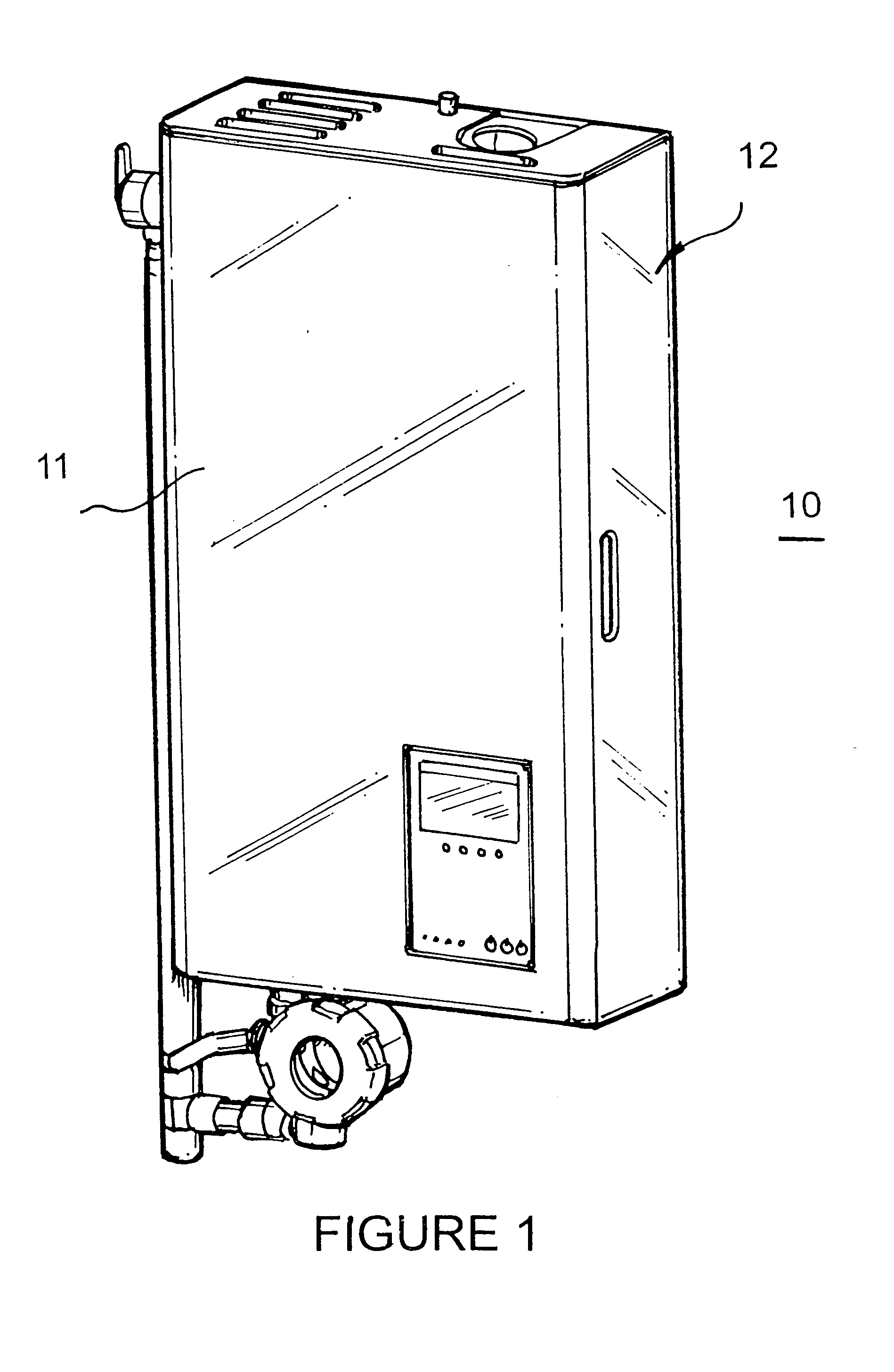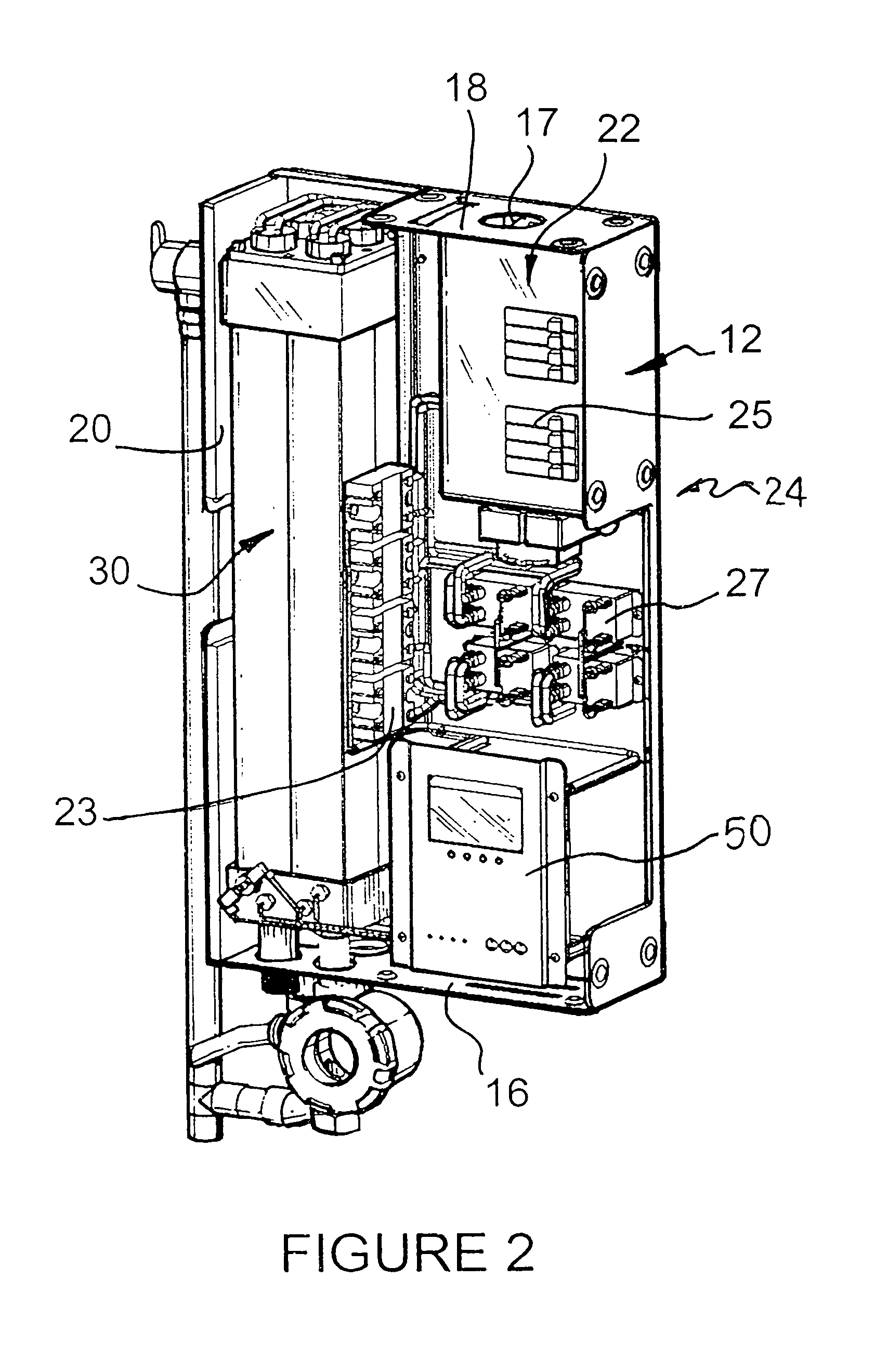Modular tankless water heater control circuitry and method of operation
a water heater and control circuit technology, applied in the direction of fluid heaters, liquid transfer devices, lighting and heating apparatus, etc., can solve the problems of large volume of water, poor energy efficiency and water conservation, and difficulty in heating water accurately and efficiently in a consistent and safe manner
- Summary
- Abstract
- Description
- Claims
- Application Information
AI Technical Summary
Benefits of technology
Problems solved by technology
Method used
Image
Examples
Embodiment Construction
[0027]Turning now to the drawings in which like reference characters indicate corresponding elements throughout the several views, attention is directed to FIG. 1 which illustrates a tankless water heater system generally designated 10 that can be used in conjunction with the present control circuitry. Tankless water heater 10 is described in more detail in a copending United States Patent Application entitled “Modular Tankless Water Heater” filed of even date herewith and incorporated herein by reference. System 10 includes a housing 12 closed by a cover 11. Tankless water heater system 10 is a system which heats water as its flows through. Electrical power is conserved by heating water only as it is needed. As water needs are increased, increasing amounts of energy are added to the flowing water to reach a desired temperature.
[0028]Referring to FIGS. 2 and 3, housing 12 acts as a support structure for the various components of system 10, and includes a flush aperture 13, an inlet ...
PUM
 Login to View More
Login to View More Abstract
Description
Claims
Application Information
 Login to View More
Login to View More - R&D
- Intellectual Property
- Life Sciences
- Materials
- Tech Scout
- Unparalleled Data Quality
- Higher Quality Content
- 60% Fewer Hallucinations
Browse by: Latest US Patents, China's latest patents, Technical Efficacy Thesaurus, Application Domain, Technology Topic, Popular Technical Reports.
© 2025 PatSnap. All rights reserved.Legal|Privacy policy|Modern Slavery Act Transparency Statement|Sitemap|About US| Contact US: help@patsnap.com



